-
Car Reviews
- All reviews
- Midsize SUVs
- Small cars
- Utes
- Small SUVs
- Large SUVs
- Large cars
- Sports SUVs
- Sports cars
- Vans
Latest reviews
- Car News
-
Car Comparisons
Latest comparisons
- Chasing Deals
Sharp pricing, generous specification, handsome styling and a few touches of genuine luxury have catapulted the Sealion 7 to success — but it isn’t perfect
You’d have to live under a rock to not have noticed the surge of BYD-branded vehicles present on Australian roads. The Xi’an, China-based marque only burst onto the Australian market in early 2022 but in the intervening years, BYD has sold more than 60,000 cars locally.
That skyward growth trajectory has frightened legacy manufacturers and contemporary rival Tesla alike, particularly when it was supercharged by this year’s Shark 6 plug-in hybrid (PHEV) ute launch which felt ‘right place, right time’.
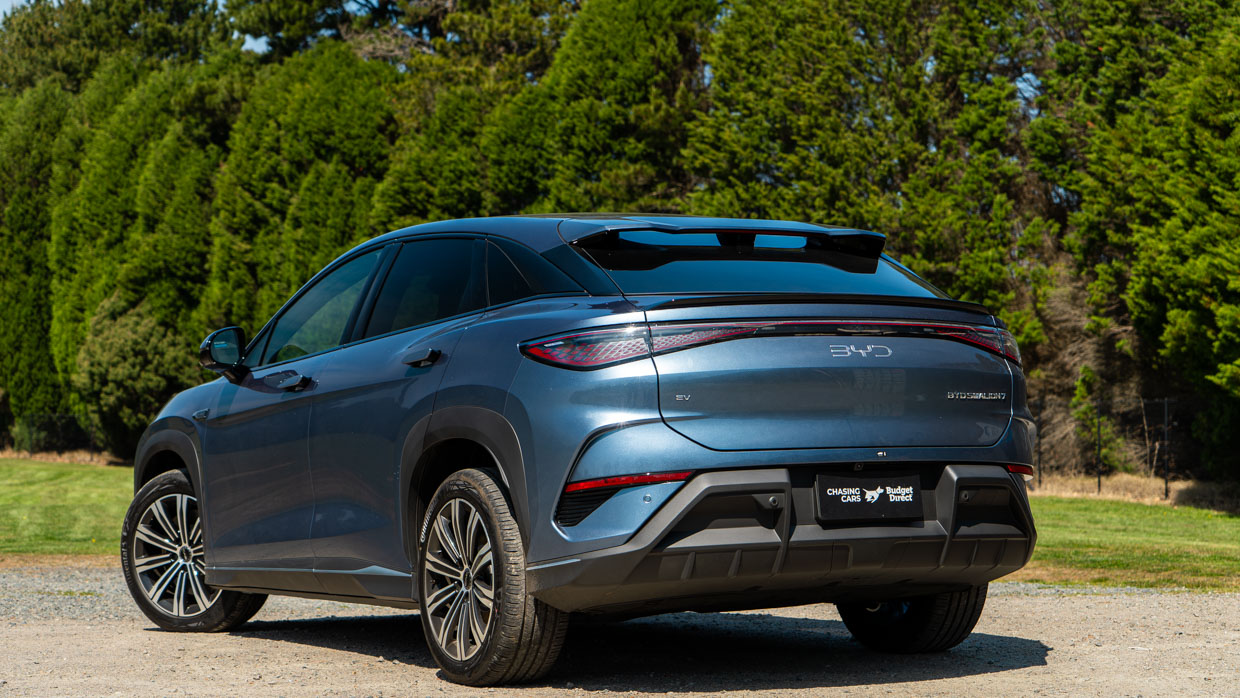
The cars haven’t been perfect, though. BYD has found favour with Australians via appealing pricing, generous specification, reasonable quality and ‘okay’ dynamics. It’s a recipe this country has seen before with the entrance of Japanese, then Korean, then Chinese cars.
Middling ride and handling of the Atto 3 small SUV, Dolphin hatchback and Seal sedan that beat the Sealion 7 to market made us wonder if BYD’s most important battery electric (BEV) model would also seem a bit mediocre on the road, dulling our enthusiasm for its sharp pricing.
The good news is that BYD is listening and learning. Numerous attributes of the Sealion 7 including ride, steering feel and refinement, represent clear improvements over the Atto 3 and (closely related) Seal.
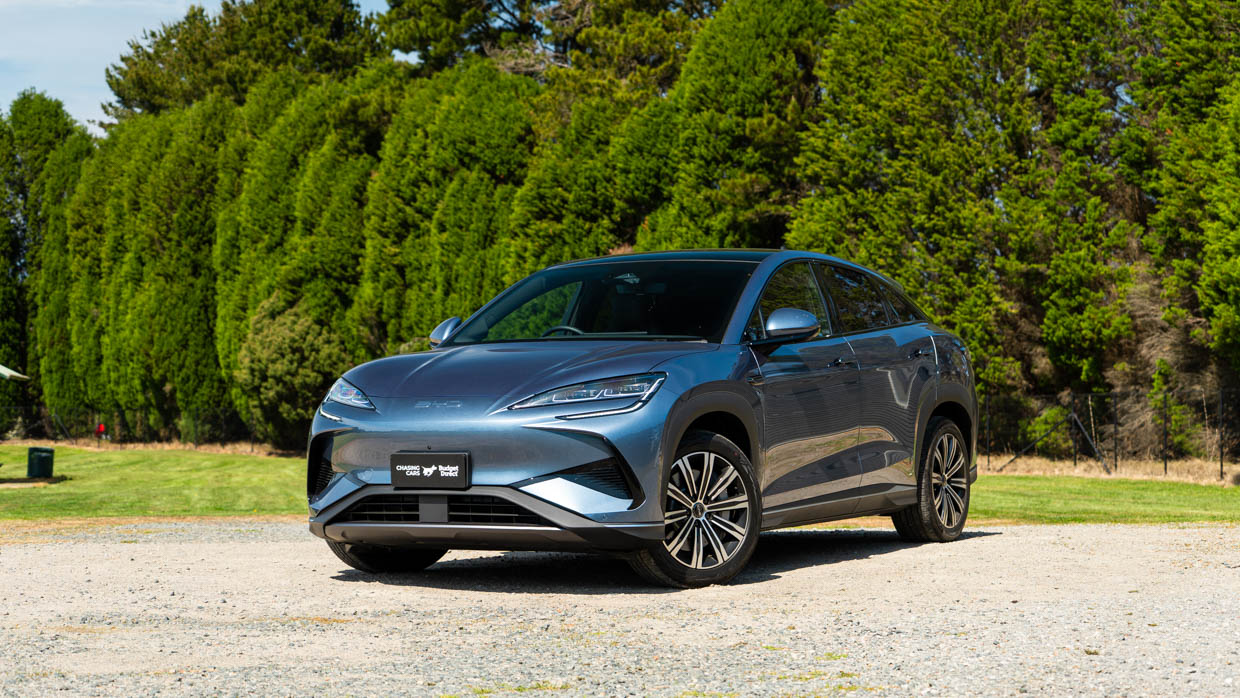
Not so surprising, then, that the Sealion 7 is the second-most popular EV in Australia for 2025 with 5183 deliveries to the end of July, well ahead of EV5 (3227). In some months, this BYD has bested the Model Y, though the Tesla SUV is still comfortably ahead in this year’s sales race (10,986).
The Sealion 7 is a ‘big metal for the money’ proposition — a classic formula Australian families have been drawn to for decades.
The 4830mm-long Sealion 7 is on the generous side of the midsize SUV class, though it does compete closely with the marginally smaller Tesla Model Y (from $58,900 + ORCs), the Kia EV5 (from $56,770 + ORCs), and alternatives like the Volkswagen ID.4 (from $59,990 + ORCs).
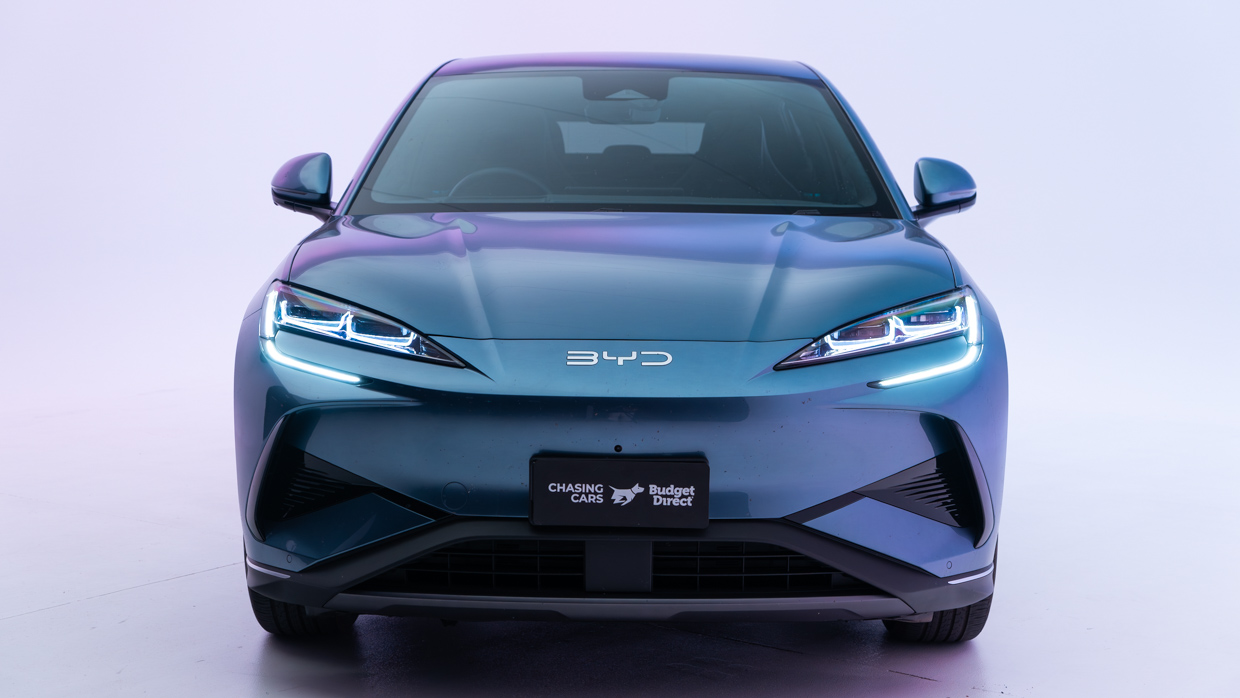
Relevantly for the EV age, Sealion 7 is also a ‘big battery for the money’ pitch: its 82.5kWh (usable) lithium iron phosphate (LFP) unit is a larger pack than that Tesla, Kia or Volkswagen offer at this price.
Still, a big battery is only useful if meaningful range can be extracted from it. More on that later. For now, the nominally entry-level Sealion 7 Premium on test compares favourably on purchase price to key rivals.
While BYD may choose to add an even more affordable base model in future with fewer trimmings, the present range-opener (the $54,990 Premium RWD) is very generously specified, and few would truly need the dual-motor Performance AWD ($63,990 + ORCs).
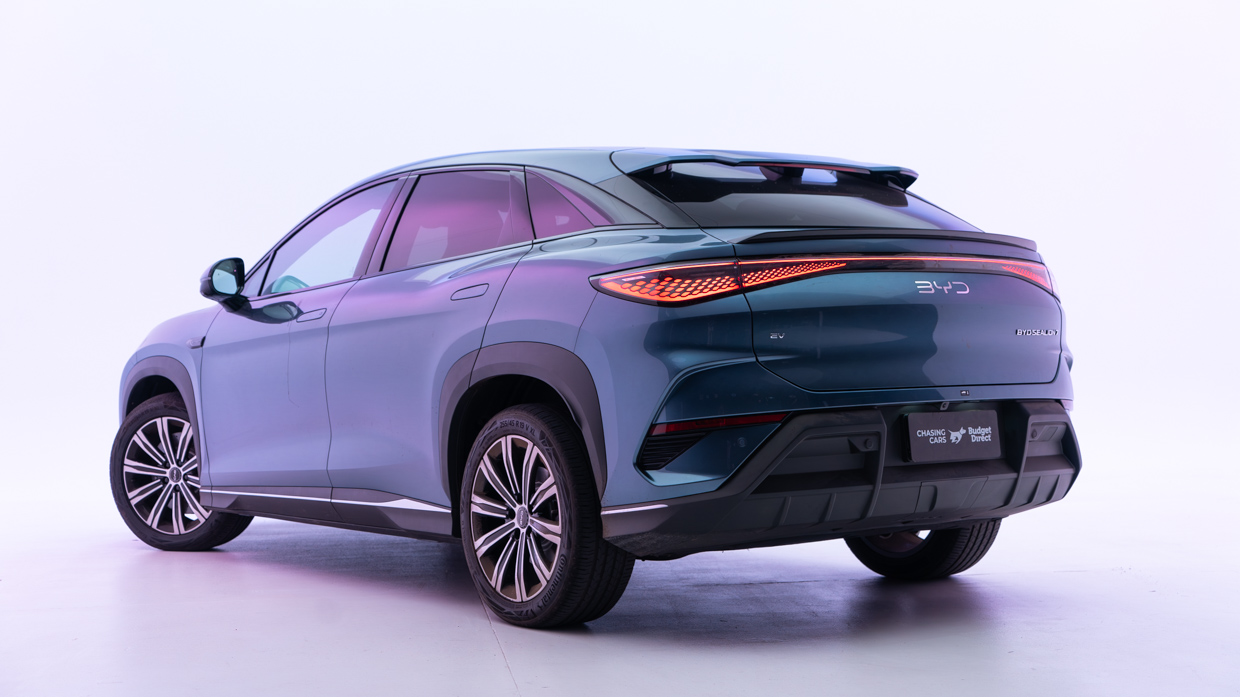
Standard specification for the Premium includes a 230kW/380Nm motor, 82.5kWh LFP Blade battery, 19-inch alloy wheels, auto LED headlights, a panoramic sunroof (non-opening), power tailgate, double-glazed acoustic glass, and a Type 2 charging cable.
Inside, included kit takes in genuine leather steering wheel and seating (with heating/cooling for the first row, and heating for the second), a 12-way power driver’s seat with memory and massage, six-way power passenger seat, and a 15.6-inch rotating touchscreen (with navigation plus wireless Apple CarPlay/Android Auto).
Further equipment includes four USB ports (two front, two rear), one wireless device charger, dual-zone climate control (with heat pump and rear air vents), 12-speaker Dynaudio stereo, and online connectivity with a digital key and over-the-air updating function.
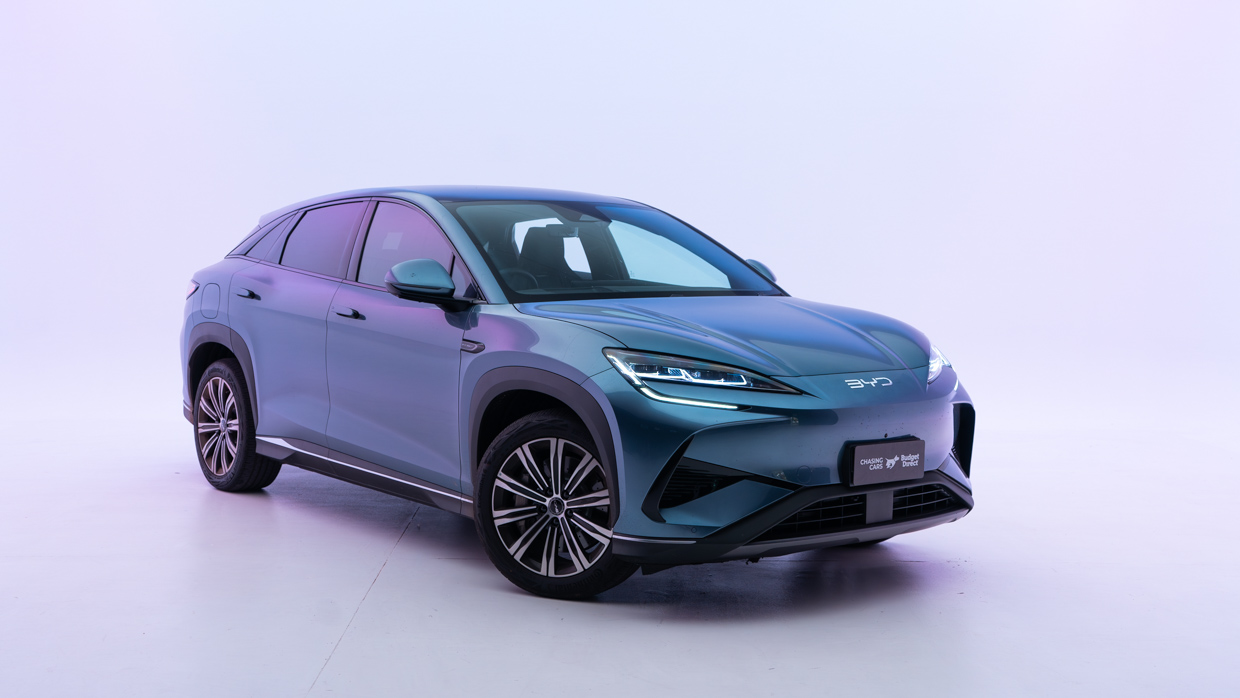
Fair to say the Sealion 7 Premium is well equipped for a base model!
An additional $9000 mainly buys a lot more speed, with the Performance trim gaining an additional (front) 160kW/310Nm motor for 390kW/690Nm combined outputs, plus painted front brake callipers and a heated steering wheel.
With black leather the only interior colour, extra-cost options are limited to exterior colour. Aurora White is standard, with Cosmos Black and Atlantis Grey attracting a $1500 charge while Shark Grey is $2000.
It’s great to see BYD absorbing feedback from owners and road testers alike and improving new releases. While the Sealion 7 uses the same ‘ePlatform 3.0’ modular architecture that also underpins the Dolphin, Atto 3 and Seal, this SUV has a range of improvements.
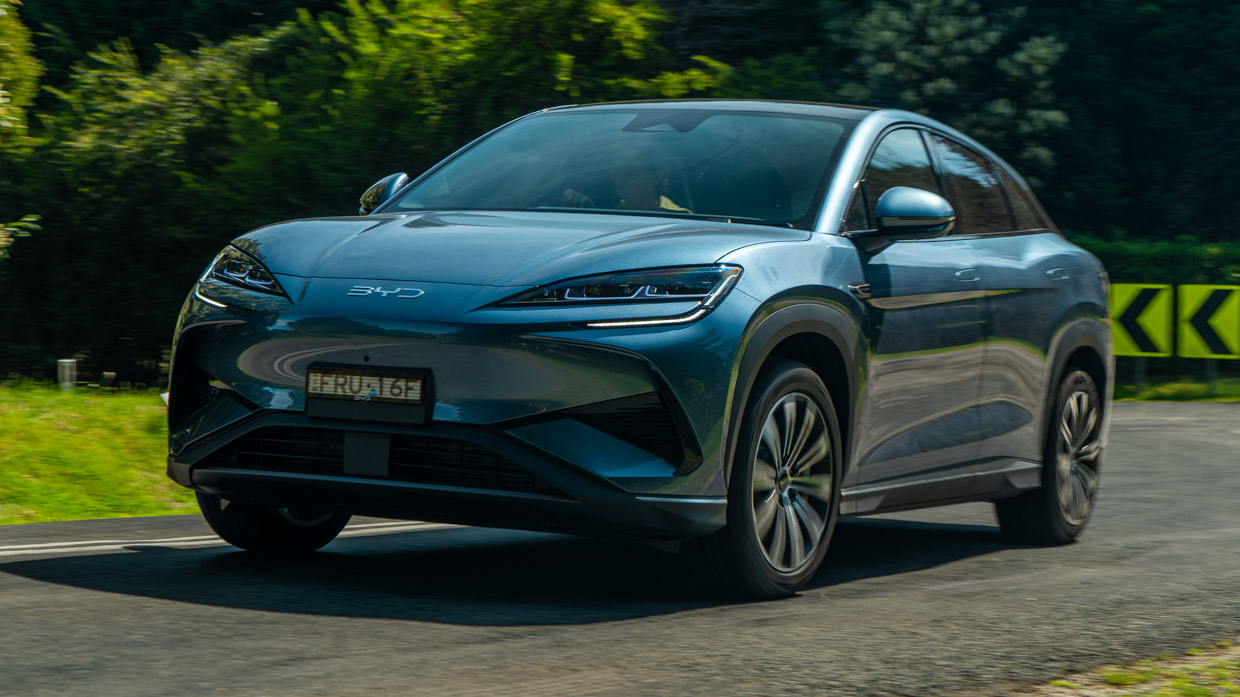
On the road, the simpler Sealion 7 Premium feels the most natural, with its single rear motor (producing 230kW/380Nm) imbuing it with surprisingly nippy performance at all legal speeds. You’d even call it fleet-footed.
By contrast the 390kW/690Nm Performance is a touch overpowered on this chassis.
Also to its credit is the (relatively) lighter weight of the Premium — though at 2225kg, it’s quite porky for this class (the ID.4 is 2154kg and the Model Y is as light as 1921kg). The Performance is heftier at 2340kg; the culprit is the big 82.5kWh battery, burdened by the heavier weight associated with LFP chemistry.
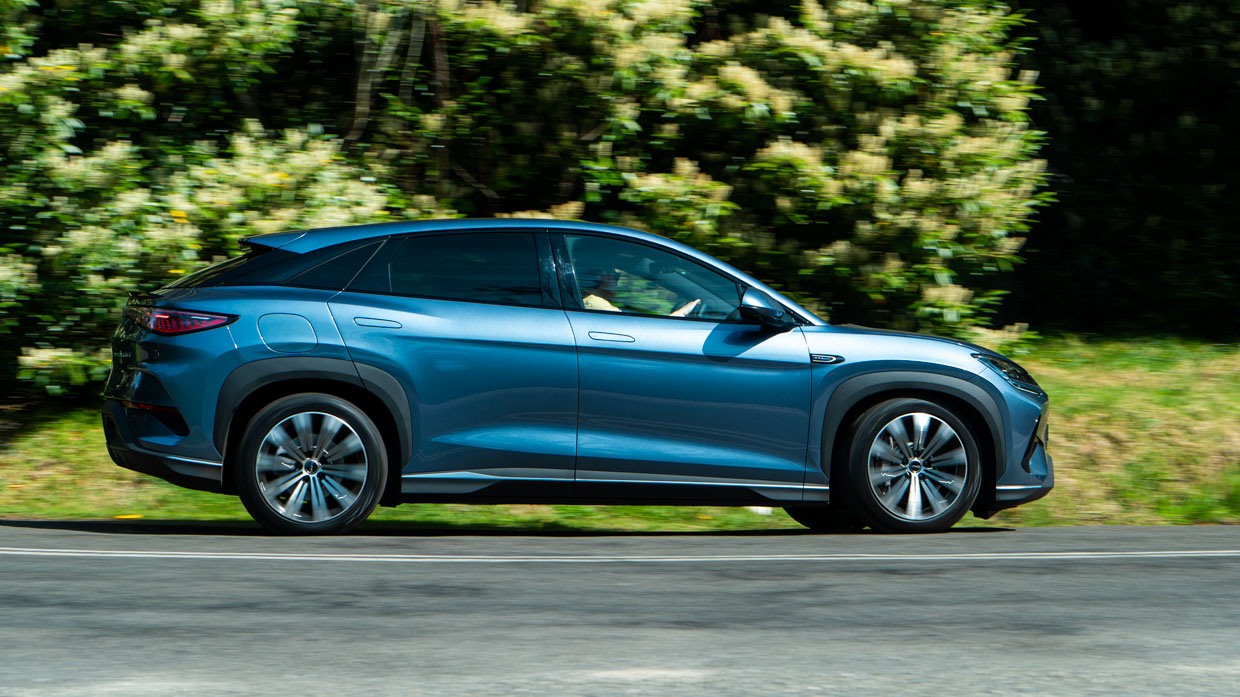
The main vice to the way the Sealion 7 its feeling of heft. It feels like it has a lot of unsprung weight (even on the Premium’s 235/50 R19 front or 255/45 R19 wheels and tyres) and as a result, the wheels clunk into potholes with a thud.
That effect is common for EVs, which need big wheels and tyres to support their weight and pace.
More frustrating is the Sealion 7’s disjointed ride quality. It might have quality frequency selective dampers all-round, but the settings aren’t right. The front suspension feels a touch overdamped, stiffly rebounding from expansion joints, while the rear is underdamped with body control suffering and producing head toss.
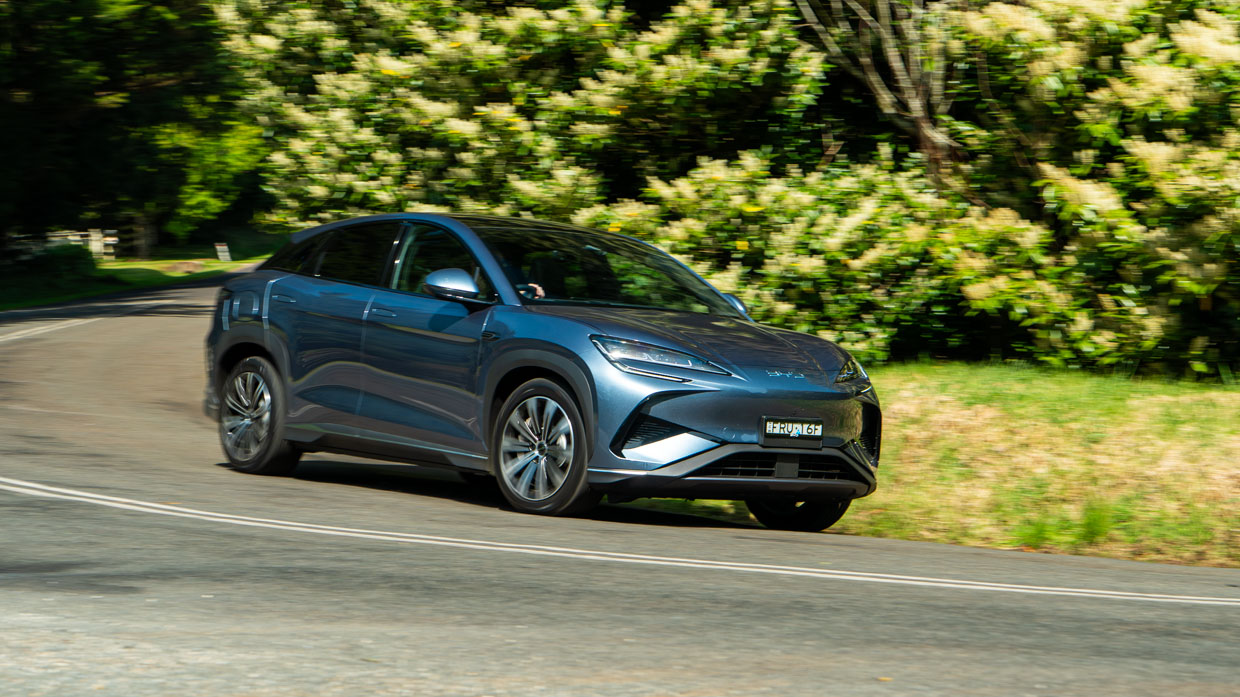
This is fixable, and BYD should bother to do so because the Sealion 7’s core chassis dynamics are solid, and it is clear a lot of work has gone into refining suspension geometry. This has produced a surprisingly engaging handler: the big BYD has nice cornering posture and is very confident in the bends.
On a twisting road, the Sealion 7 is more fun to drive than a Model Y with slightly more relaxed electronic stability control tuning and also a more natural-feeling steering rack—what a nice improvement from the weirdly grainy steering of the BYD Seal and Atto 3!
Adjustable regen settings make it possible to find a comfortable level of off-throttle deceleration though the physical brake pedal started to get ‘long’ after burning up and down a few B-roads.
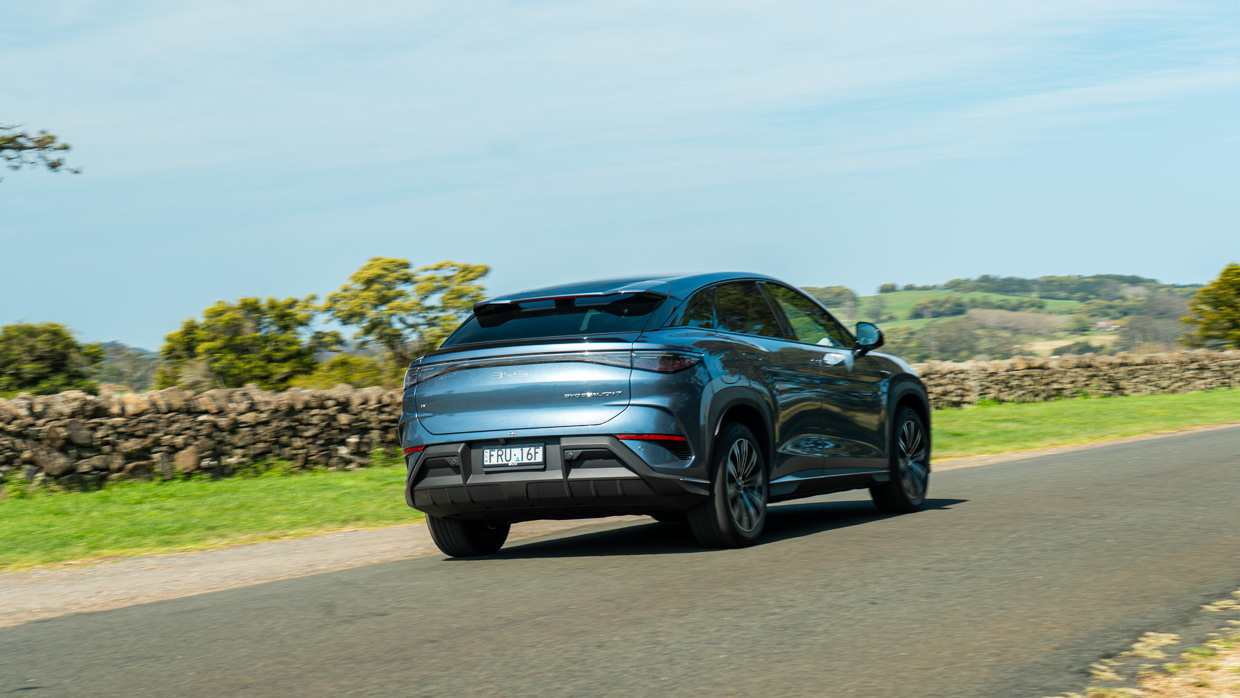
Cabin refinement is a mixed bag. The Sealion 7 has double glazing on the windscreen and front windows, and as a result, there is little wind or environmental noise — but there is pronounced and distracting road noise, especially on coarse chip.
While the driving dynamics are ‘getting there’, where the Sealion 7 really makes an impact is inside. Beyond the pleasant external kerb appeal, the interior feels (and is) lush. Build quality seems reasonable enough while the materials used are genuinely appealing.
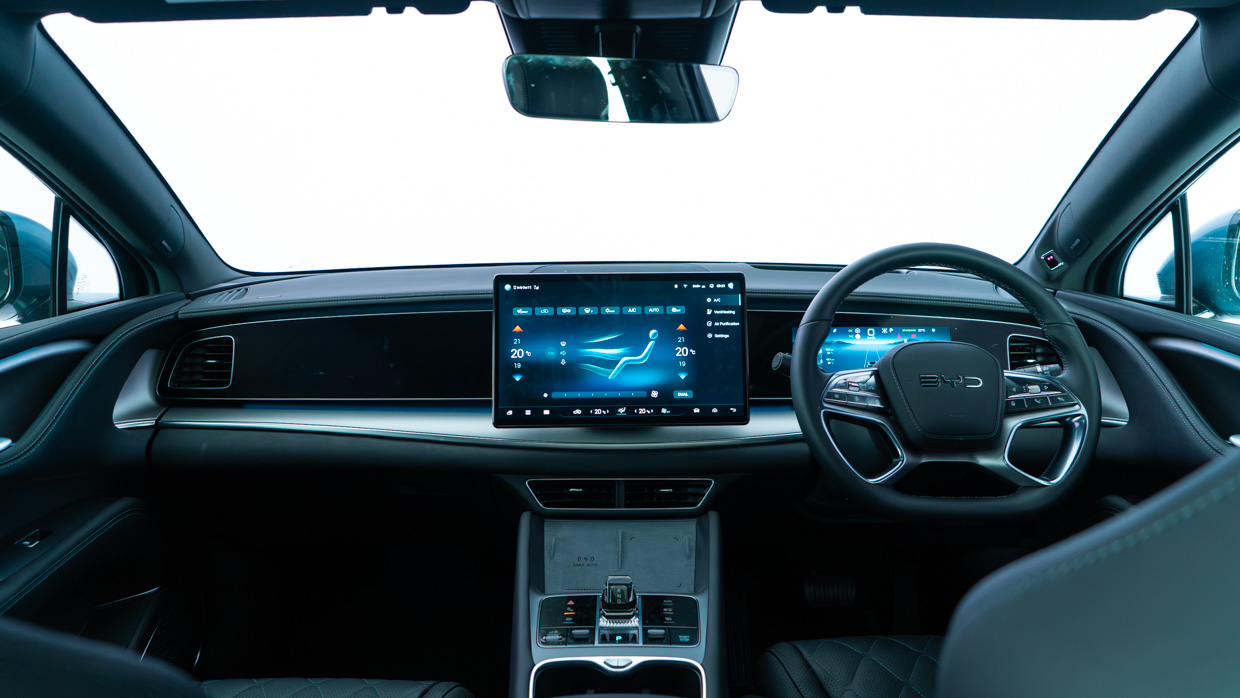
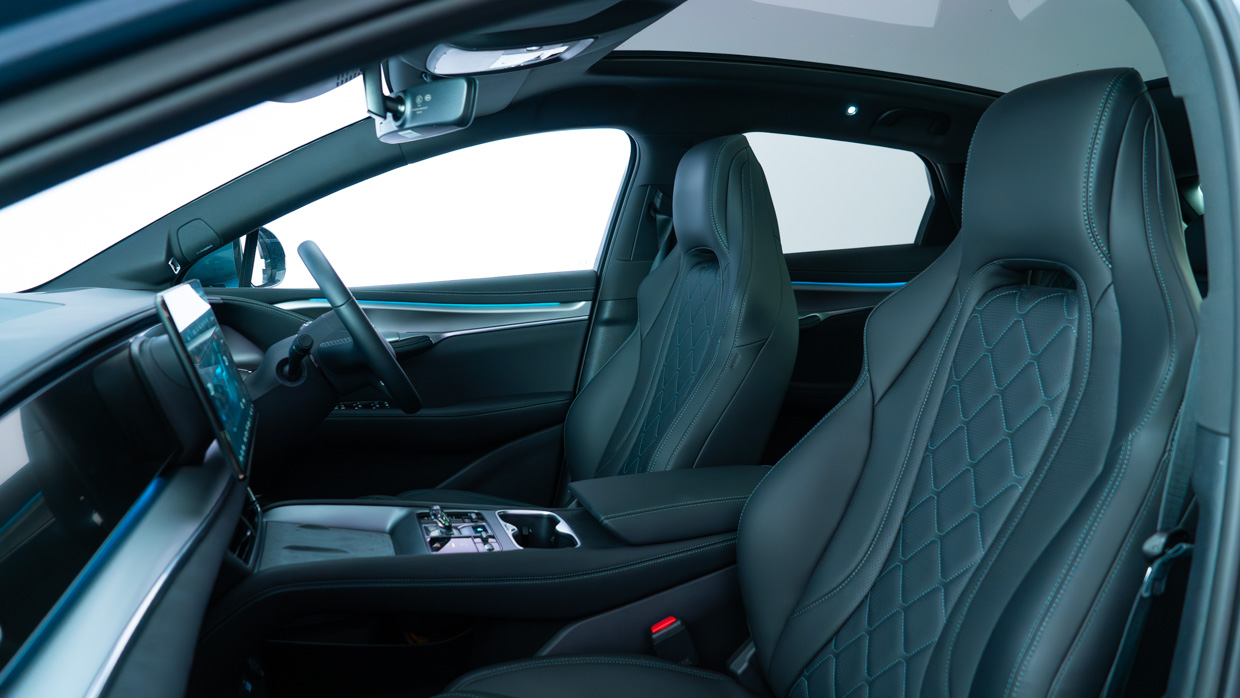
We say ‘genuine’ because that’s what it is: unlike so many vinyl-clad rivals, the upholstery on the seats and steering wheel is actual leather in the Sealion, and it feels it. Black is the only colour but the cabin of the Premium feels rich and a step above the plasticky meanness of far too many cars in 2025.
In that sense, it’s almost as if BYD is pitching itself as a Lexus-like premium marque. The truth is that in China, BYD sells models with various levels of plushness, with the Seal sedan and Sealion 7 hailing from an upmarket vein but beneath Denza, BYD’s luxury brand that is coming to Australia with its own range of models.
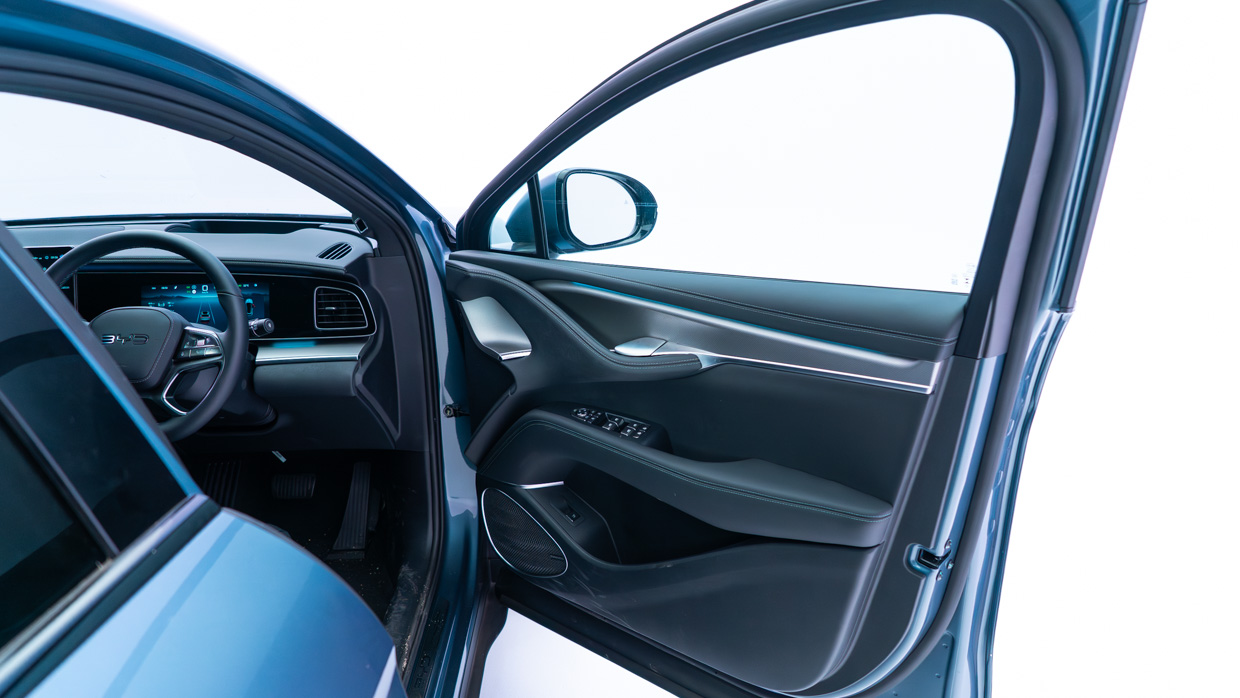
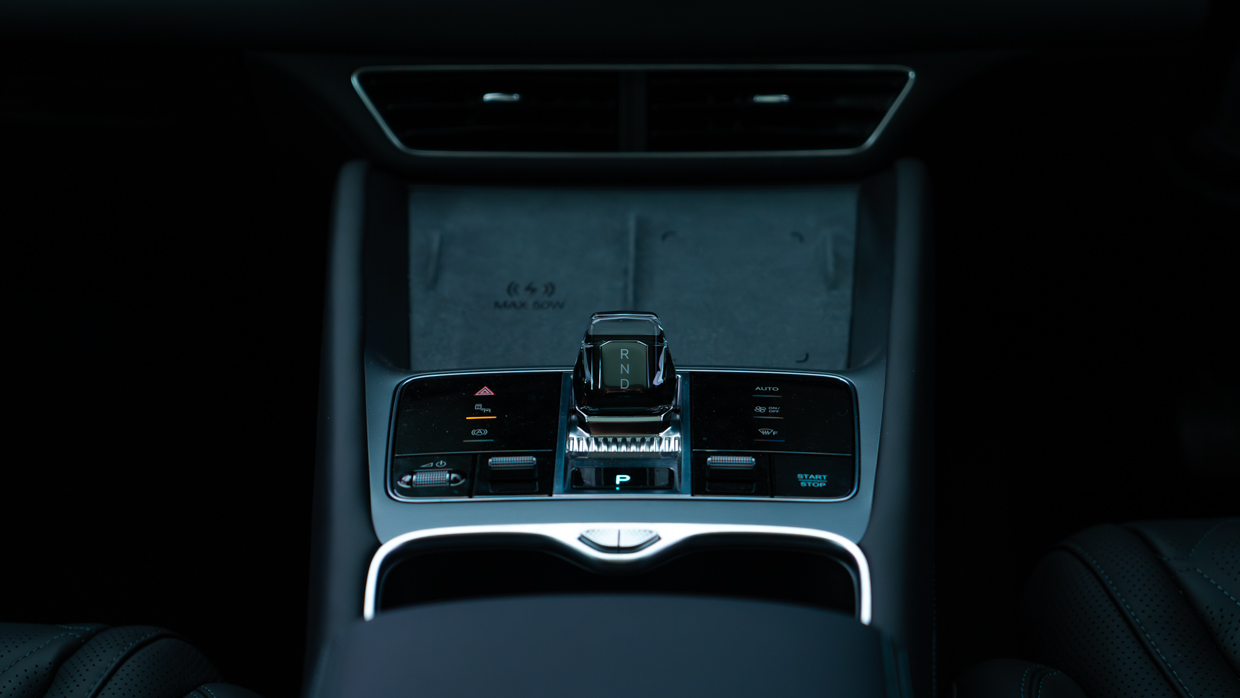
It’s not the last word in perceived expense but the Sealion 7 feels nice, not just on first glance but also over a longer drive where the smattering of soft-touch materials makes this SUV feel more expensive than its $55K price.
We found the driver’s seat comfortable and appreciated the standard-fit seat cooling (very much needed in a dark leather interior in the Australian summer). However, we’re less enamoured by skimping on passenger lumbar, noted when our co-driver started squirming.
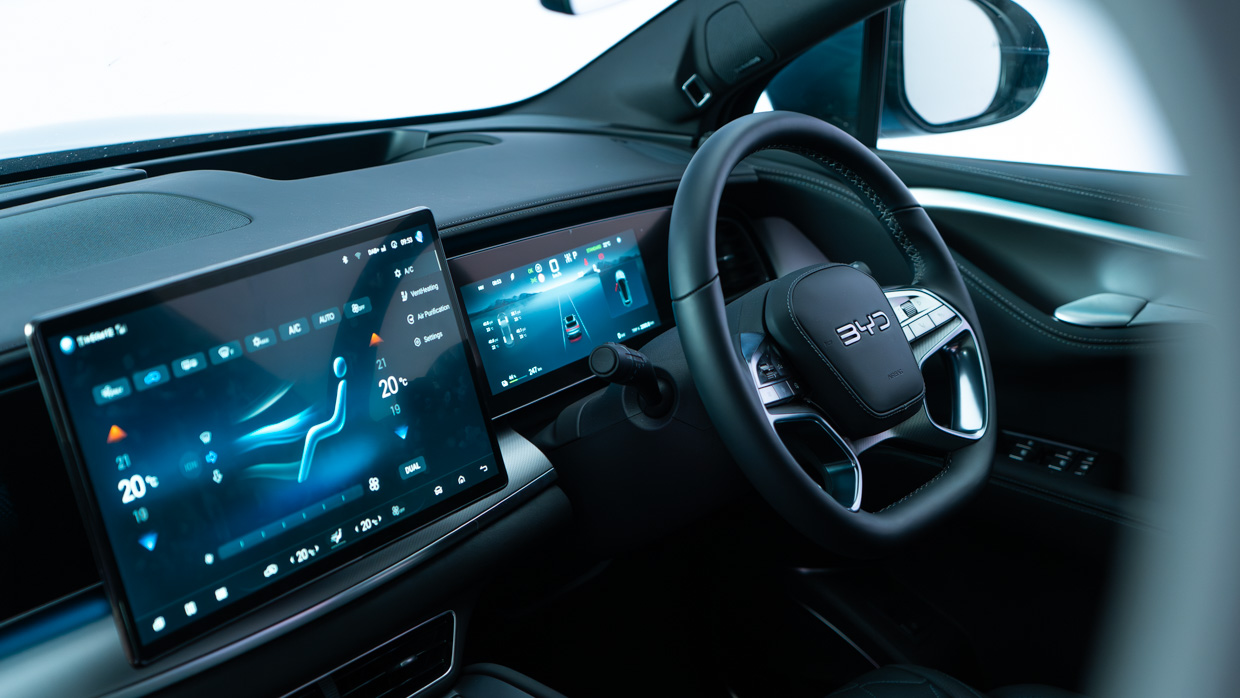
No doubt another factor that appeals to some buyers cross shopping the BYD against a Tesla is the Sealion 7’s conventional cabin layout. Clear driver (10.25-inch) and central (15.6-inch) screens are present here and they do, well, what you would expect for the most part. The middle one even rotates — a cool gimmick.
There are even some physical buttons here and there for functions like volume and drive mode but we’d prefer to see real climate controls used in future, particularly as the (stable) wireless CarPlay/Android Auto connections take over the entire screen, including the software air-con control.
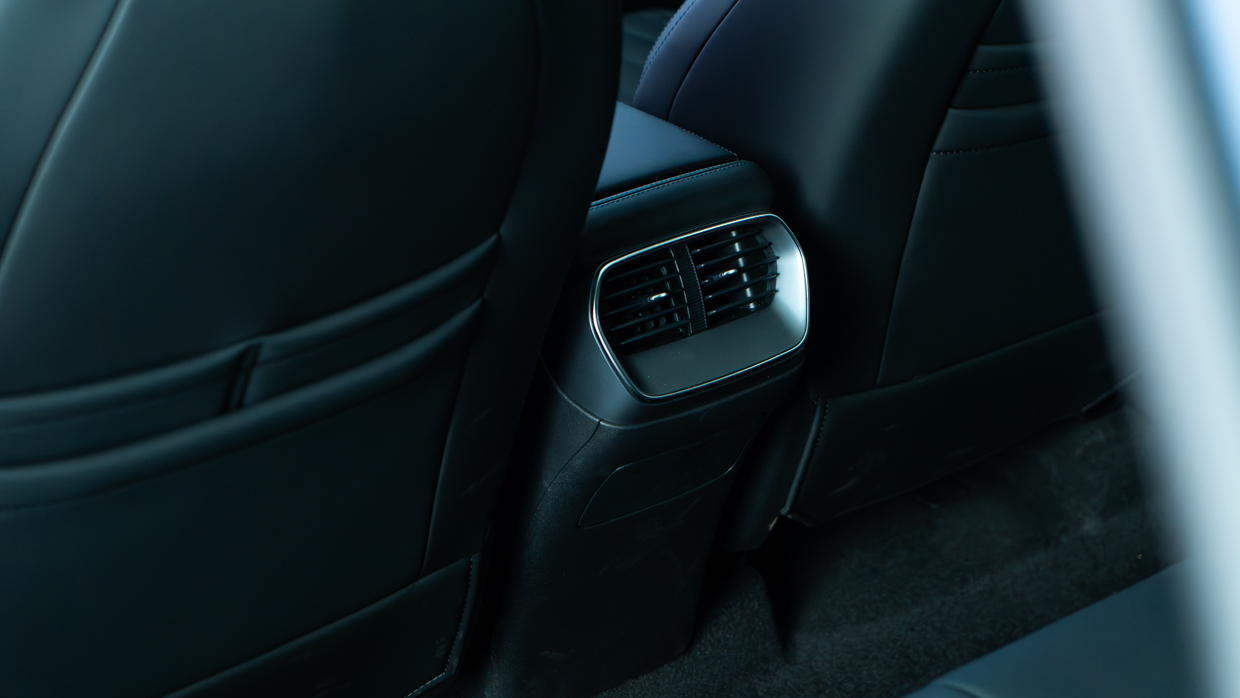
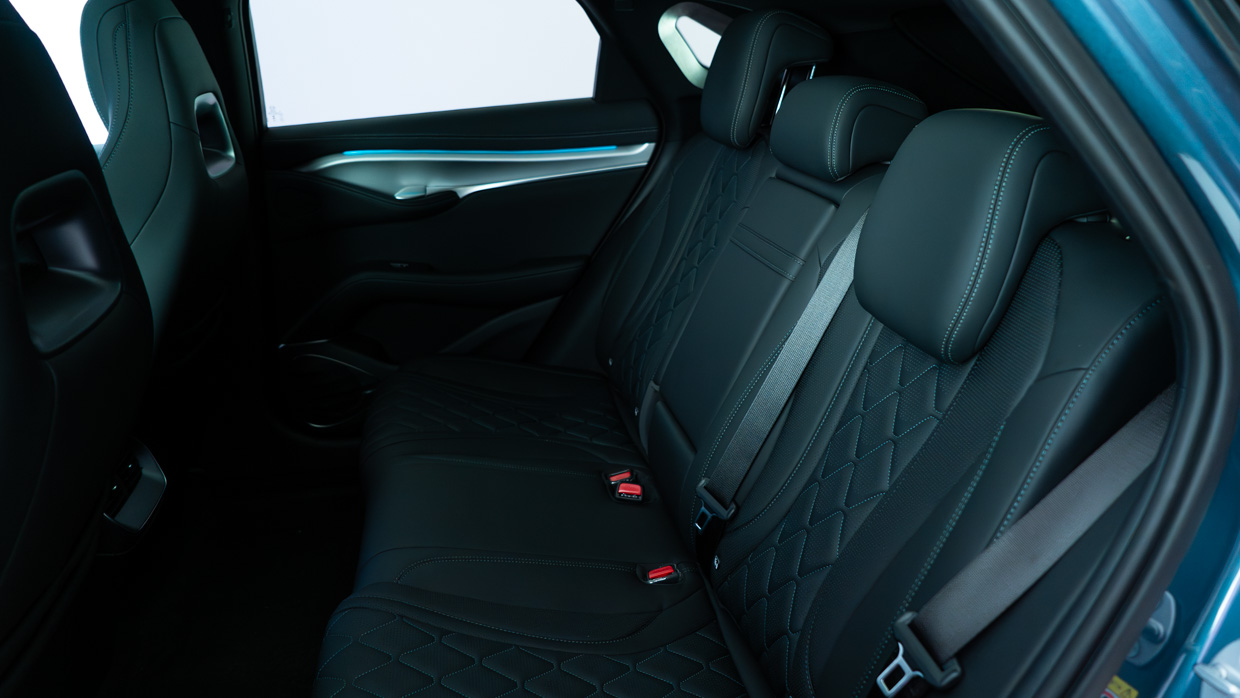
The Sealion 7’s relatively long 2930mm wheelbase affords plenty of back seat room, with at least two adults comfortably sliding into the second row while the tighter centre pew means infrequent five-up transport is possible. Rear air vents are standard.
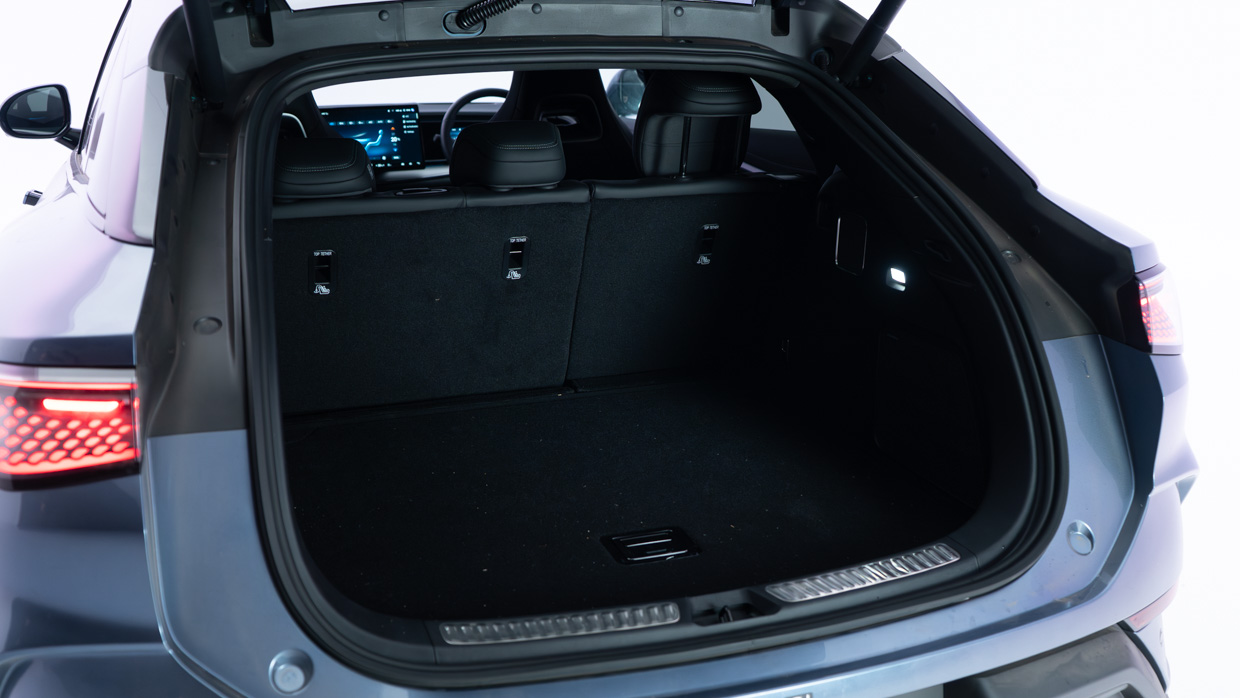
A power tailgate opens promptly to reveal a reasonable 500 litres of boot space. The boot itself is a little shallow but it’s wide and sliding suitcases in is simple enough. Like most EVs, there is no spare wheel or tyre but instead a tyre repair kit.
Yes. The BYD Sealion 7 received a five-star score from Australia’s vehicle safety and crash testing body ANCAP against tough current 2025 standards.
The Sealion 7 was crash tested in Europe by Euro NCAP, with ANCAP receiving those scores and ‘translating’ them into the Australian protocol.
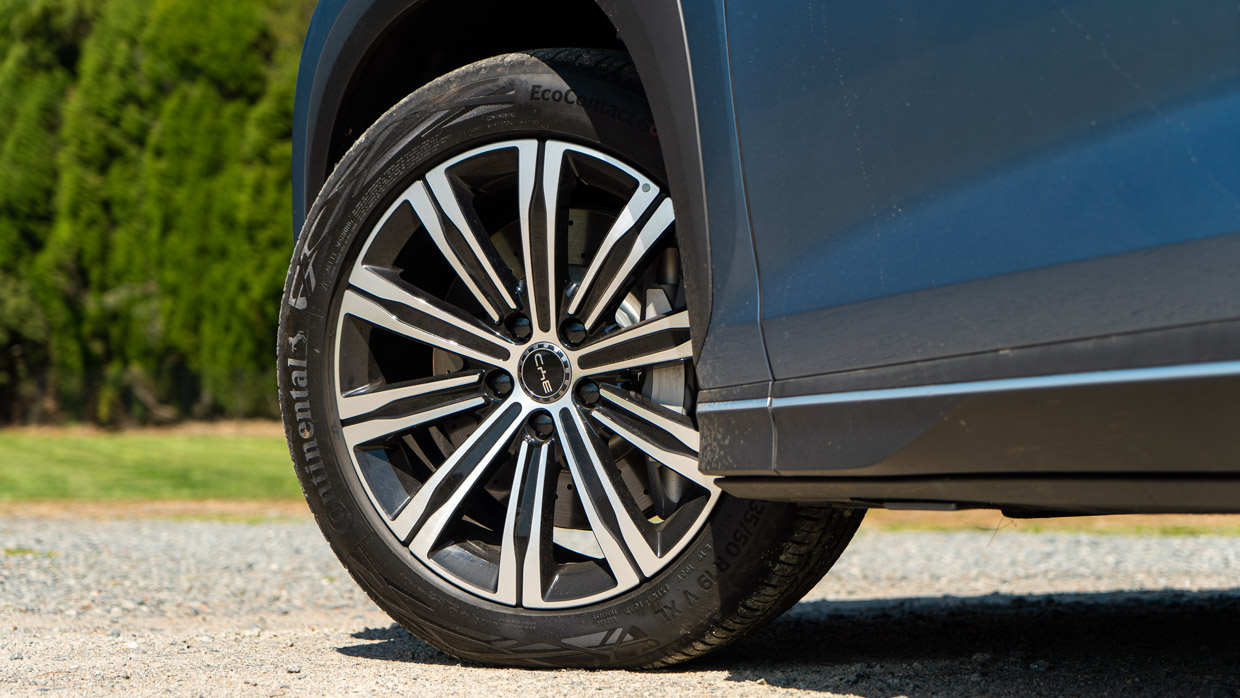
Individual scores recorded by the Sealion 7 were as follows:
All available safety features are standard across the Sealion 7 range with no ‘extras’ reserved for more expensive models. These standard technologies include:
We were impressed by the smoothness of the Sealion 7’s adaptive cruise control and the clarity of its 360-degree camera (particularly as the latter is presented on such a huge 15-inch screen). Parking is made easier by this.
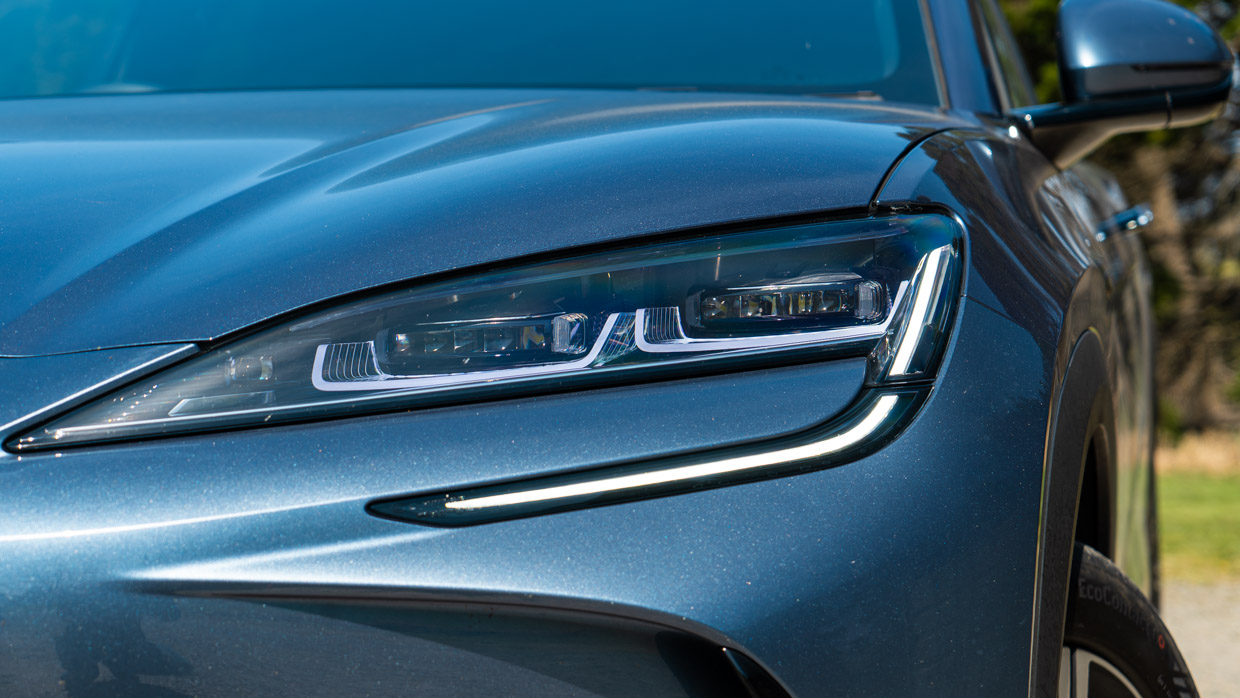
However, the lane keeping assistance is hypersensitive when intelligent/adaptive cruise control is engaged. Cruise control can be changed to manual (which reduces the lane intervention) but this can’t be done on the fly — the Sealion 7 has to be parked.
Additionally, the driver attention monitor was oversensitive, though this can be switched off via the menus (however, it reverts to ‘on’ every time the car is driven).
The warranty that applies to the Sealion 7 runs for six years/150,000km in the case of the vehicle, or eight years/160,000km in terms of the traction battery. The latter warranty promises at least 70 percent battery capacity retention.
At current prices, servicing costs for the Sealion 7 Premium are $1543 for five years/100,000km, with maintenance intervals taking place every 12 months/20,000km. Each visit averages a reasonably affordable $309.
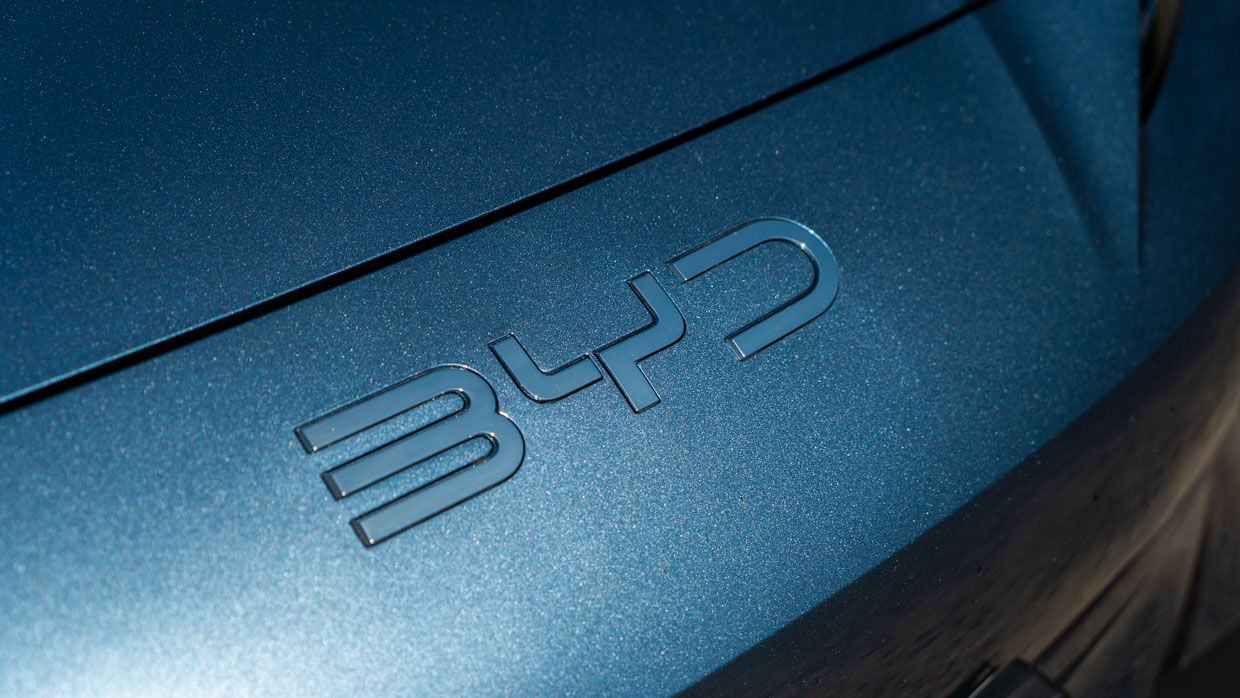
Both versions of the Sealion 7 sold in Australia use an 82.5kWh (usable) LFP battery.
To judge the Sealion 7 Premium’s efficiency, we conducted range tests on urban roads and on Australian highways. The urban test was conducted in Sydney in moderate traffic (average 30km/h) and the highway test was conducted between Sydney and Bowral return (uphill and downhill, averaging 100km/h).
These range tests resulted in the following outcomes:
Those scores mean that the Sealion 7 Premium is not particularly efficient. In similar range tests, the 2025 update to the Tesla Model Y Long Range RWD consumed 13.8kWh/100km (urban) and 16.0kWh/100km (highway).
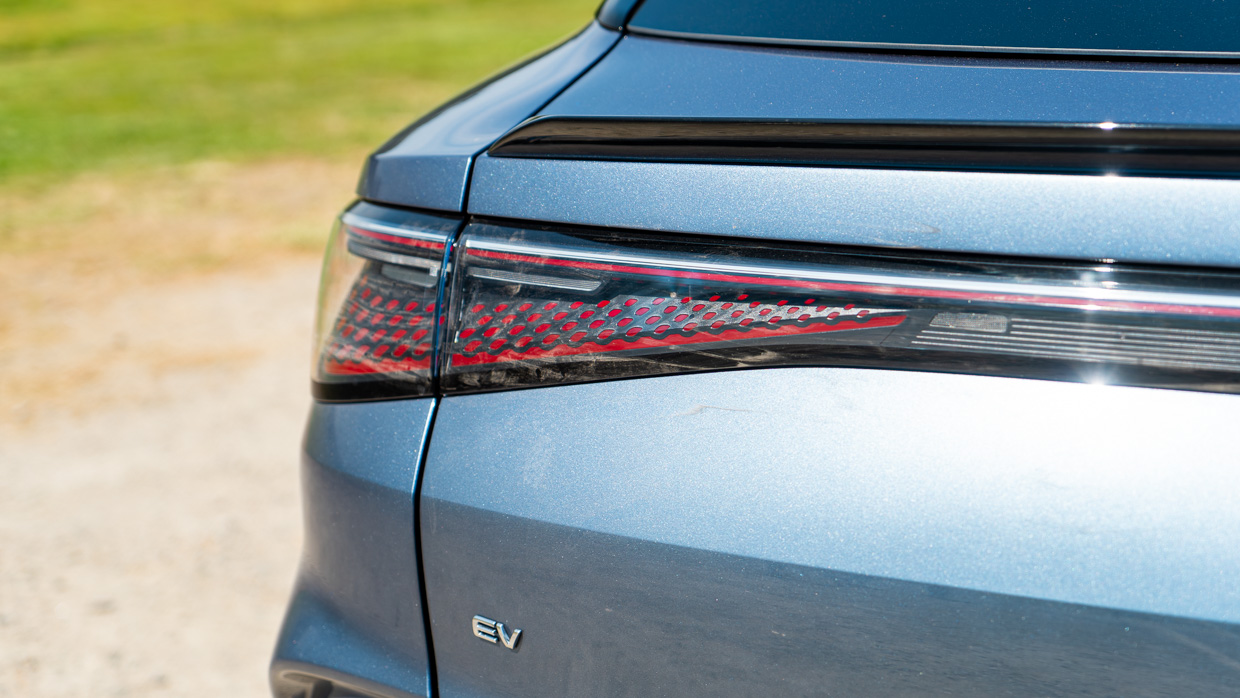
At an indicative energy cost of $0.50/kWh, and with 10 percent charging losses factored in, every 100km driven in the Sealion 7 costs about $10 in urban areas and $12 on the highway (in charging costs).
Charging can be done at up to 150kW DC (claimed 32 minutes 10-80 percent) and 11kW AC (claimed 9 hours 0-100 percent). Vehicle-to-load (using the Sealion 7’s battery to power external appliances) is possible at up to 3.3kW speeds.
At a price of $54,990 + ORCs, the BYD Sealion 7 Premium is one of the best-value new cars on the Australian market.
This SUV is generously proportioned, big enough for family duties, handsome outside, and quite richly appointed inside. It is quick, quite refined and reasonably competent to drive on Australian roads. Certainly, it does enough to feel well-executed.
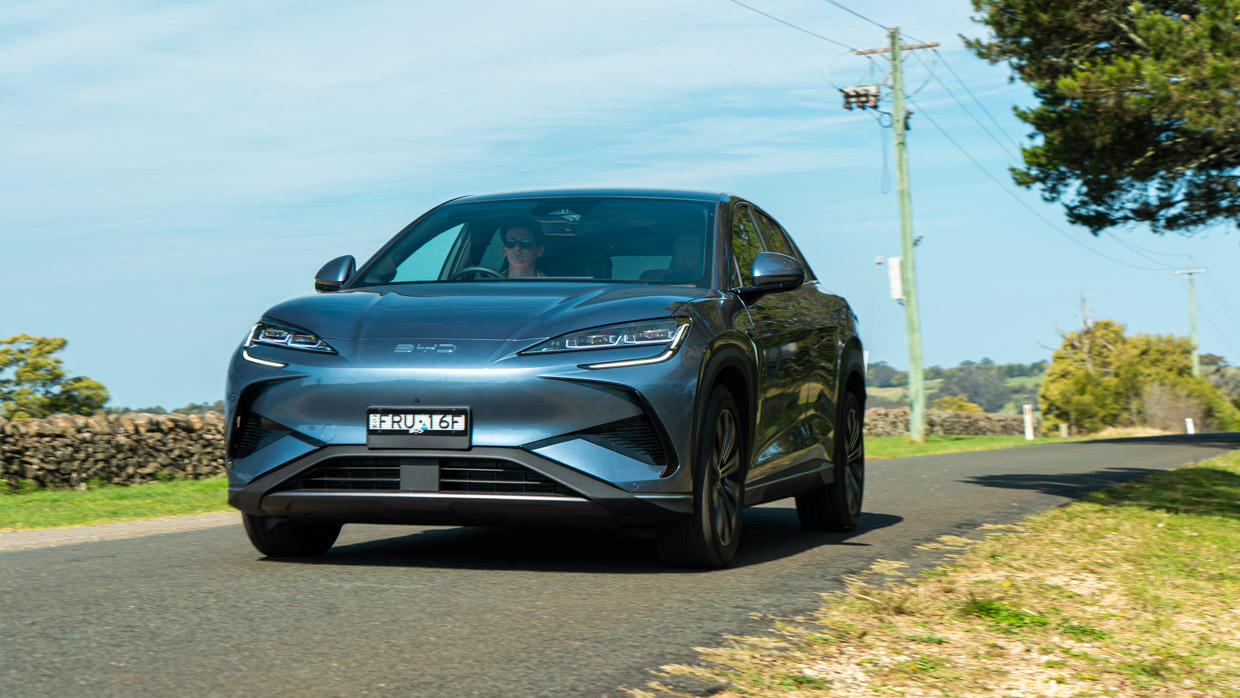
The Tesla Model Y is better to drive and considerably more energy efficient (and is therefore cheaper to run), but we appreciate the Model Y is a ‘vegemite’ style choice: you’ll hate it or love it. The Sealion 7 is considerably more mainstream in its approach.
More attention to efficiency and ride quality would further bolster the Sealion 7’s broad appeal, and we’re hopeful to see these aspects improved in a future update.
Key specs (as tested)
About Chasing cars
Chasing Cars reviews are 100% independent.
Because we are powered by Budget Direct Insurance, we don’t receive advertising or sales revenue from car manufacturers.
We’re truly independent – giving you Australia’s best car reviews.
The estimate provided does not take into account your personal circumstances but is intended to give a general indication of the cost of insurance, in order to obtain a complete quote, please visit www.budgetdirect.com.au. Estimate includes 15%^ online discount.
^Conditions Apply
Budget Direct Insurance arranged by Auto & General Services Pty Ltd ACN 003 617 909(AGS) AFSL 241 411, for and on behalf of the insurer, Auto & General Insurance Company Limited(ABN 42 111 586 353, AFSL 285 571).Because we don’t know your financial needs, we can’t advise you if this insurance will suit you. You should consider your needs and the Product Disclosure Statement before making a decision to buy insurance. Terms and conditions apply.
Indicative quote based on assumptions including postcode , 40 year old male with no offences, licence suspensions or claims in the last 5 years, a NCD Rating 1 and no younger drivers listed. White car, driven up to 10,000kms a year, unfinanced, with no modifications, factory options and/or non-standard accessories, private use only and garaged at night.
^Online Discounts Terms & Conditions
1. Discounts apply to the premium paid for a new Budget Direct Gold Comprehensive Car Insurance, Third Party Property Only or Third Party Property, Fire & Theft Insurance policy initiated online on or after 29 March 2017. Discounts do not apply to optional Roadside Assistance.
2. Discounts do not apply to any renewal offer of insurance.
3. Discounts only apply to the insurance portion of the premium. Discounts are applied before government charges, taxes, levies and fees, including instalment processing fees (as applicable). The full extent of discounts may therefore be impacted.
4. We reserve the right to change the offer without notice.